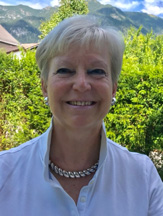Taxpayers pay additional personal income tax on their income in the municipality where they are domiciled. The proceeds of that tax go to the municipal treasury. In Flanders, supplementary personal income tax averages 7.2% of taxable income.
Like any taxpayer, second residents pay additional personal income tax in the municipality where they first reside. However, they also make use of the municipal infrastructure and services in the municipality of their second residence. That is why it is logical that municipalities also ask second-residents to help bear the costs.
A balanced distribution of the burden between domiciled residents and second residents is, of course, essential here.
An interesting guideline on this balance can be found on page 14 of a “Handbook on second residence” on the website of the Flemish Housing Agency (wonenvlaanderen.be): “In order not to create a shift in the tax burden to persons who are not registered in the municipality’s population registers and who are therefore not eligible to vote there, the rate charged must be in reasonable proportion to the taxes paid by the inhabitants (first and foremost the additional personal income tax and the property tax surcharge).”
It is therefore interesting to take a closer look at the relationship between municipal tax and second residence tax in coastal municipalities. However, this is not as simple as it seems. The tax revenues from the various municipal taxes should actually be available on the websites of the various coastal municipalities. Unfortunately, little relevant information can be found there (!). Fortunately, there are figures on the website of the Flemish Agency for Inland Administration. Among other things, there are tables with an overview of the taxes and their proceeds from 2008 to 2018 for each municipality.
On the basis of these data, we have juxtaposed in a first table for each coastal municipality and for the assessment year 2018 the total proceeds of the additional personal income tax and the total proceeds of the second residence tax. Please note, however, that this first table does not yet take into account the number of taxpayers per municipality. That is why the figures are highest in municipalities with many taxpayers.
* Bredene and De Haan have an important population of second residents in holiday parks and camping pitches. For these municipalities the proceeds of the tax on camping sites and camping stays were added to the figures for the second residence tax. For other municipalities we did not do this because the population mentioned is much lower.
In the majority of the coastal municipalities, the proceeds of the tax on second residences are therefore higher than the municipal tax that the municipalities receive from their own registered residents. However, this may be due to the high number of second homes in those municipalities.
That is why we have taken that number into account in a second table. A first column shows the nominal amount of second-stay tax per stay for 2018. In the case of differentiated rates for different types of second residence, we opted for the contribution due for the second occupation of a studio.
In the second column, the additional personal income tax is divided by the number of domiciled households per municipality (the figures on the number of households can be found on the website https://provincie.incijfers.be ). In this way, it was also possible to calculate the average additional personal income tax per residence occupied by domiciled inhabitants.
In all coastal municipalities, therefore, owners of a dwelling occupied by second residents contribute more to municipal finances than owners of dwellings occupied by domiciled households. At the top of the list is Koksijde, where the owners of dwellings occupied by domiciled households pay nothing at all and all charges are borne by owners of second residences.
Since it can be assumed that second-residents make less use of the infrastructure and services than domiciled residents, these taxes have therefore created a substantial shift in the tax burden to persons who are not on the municipality’s population register and are not eligible to vote.
Becoming a fiscal refugee is always possible. Elsewhere on the TWERES website is a report of a study published in 2016 by the Flemish Government’s study service on the number of second homes in Flanders. Apart from the coast, the authors also discovered large absolute numbers of second homes in some cities: Antwerp came top with almost 18,000; Ghent, Bruges, Kortrijk, Hasselt and Mechelen followed with between 2,400 and 6,000 second homes. The fact that these cities are on this list is partly due to the fact that people living in Antwerp or other Flemish cities register their domicile in Knokke-Heist or another coastal municipality.
However, TWERES chooses to enter into dialogue with the coastal municipalities. Where there is no other option, the legal route will be taken and if there are enough members and sympathisers we can, all together, try to persuade politicians to change applicable regulations.


